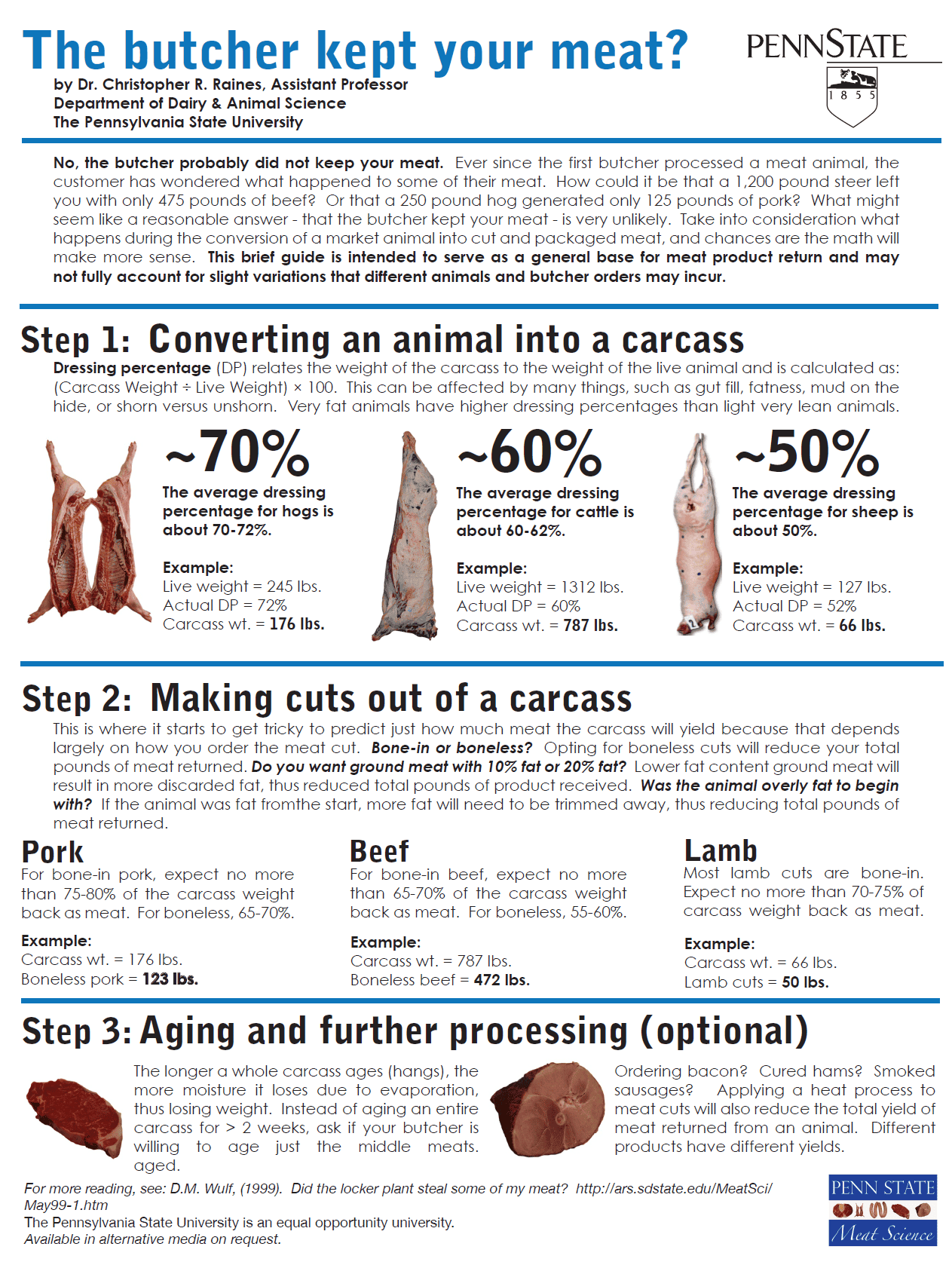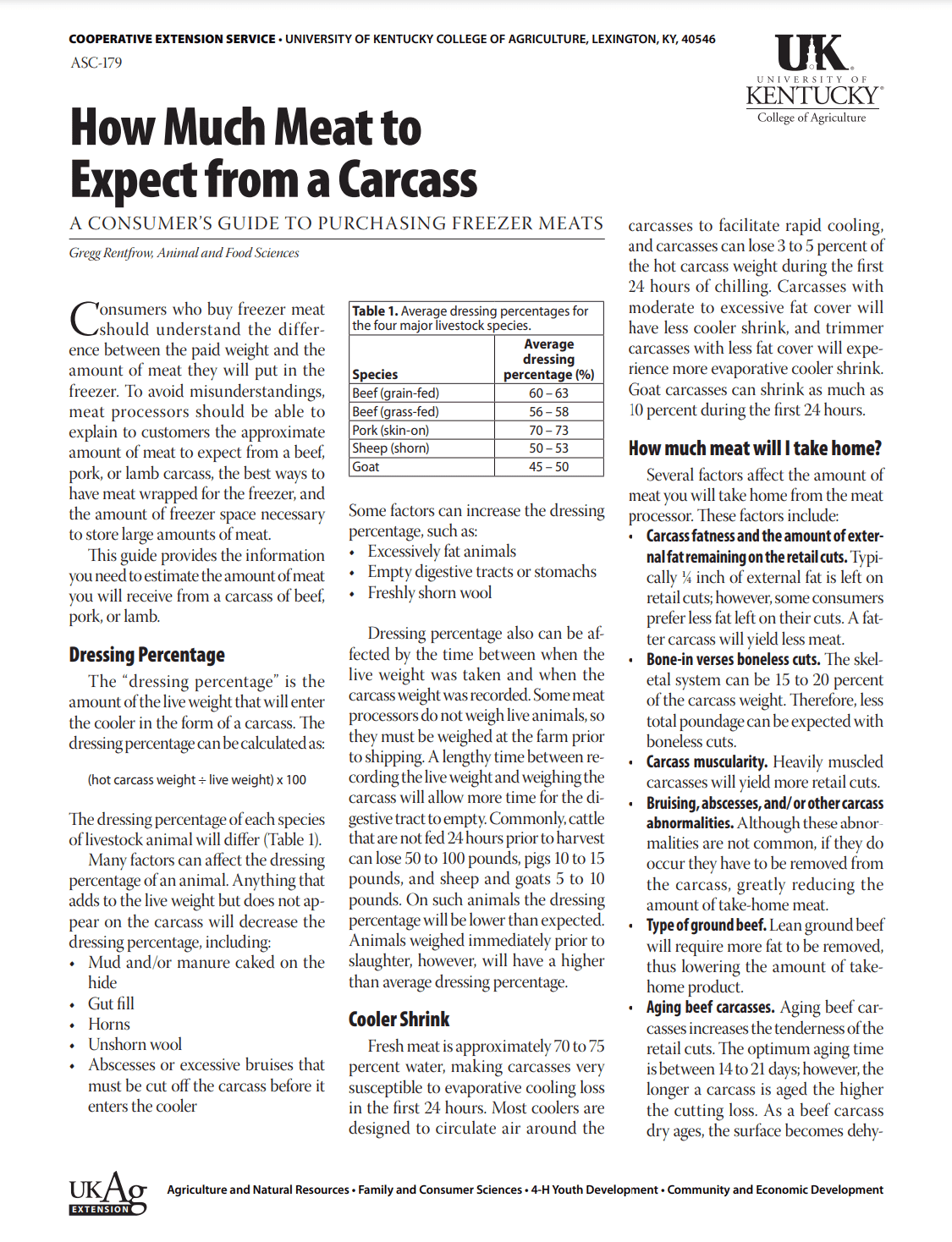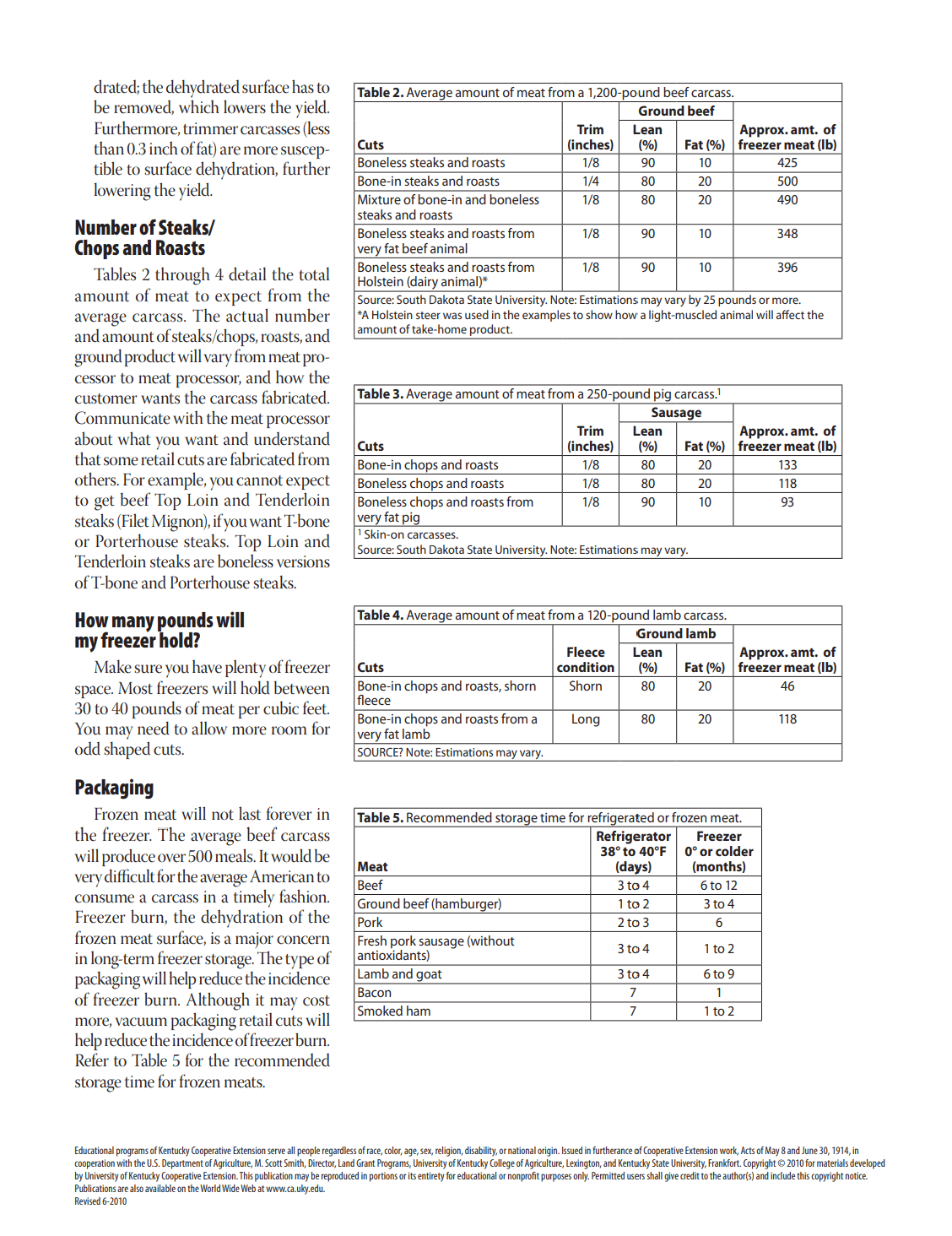Email your completed PDF cut sheet to [email protected]
Why you can't have your tenderloin and T-bones.
Filets, T-bones, chucks, and more, but maybe not all at once.

Here's some tips for filling out the cut sheet for your beef order.
- Tenderloin filets vs T-bones, Porterhouse and NY strips. There are 2 whole tenderloin filets per animal. They're located on the inside of the ribs at the short loin and sirloin. If you choose to cut tenderloins separately, whole or cut into filets, your order cannot include T-bone or porter house steaks. That smaller, rounder section on your T-bone or porterhouse is the tenderloin. Think of a porter house as a bigger T bone with a larger section of filet. If the tenderloin filet is taken out and processed on it's own, you are left with NY strip steaks.
- Hamburger vs roasts. The more whole muscle, roast and steaks you select, the less hamburger grind you will get in your order. If you want more hamburger, don't choose as many roasts.
- Lean ground beef. The leaner the ground beef, the less overall product there will be. 70/30 is standard grind; 80/20 is approximately the same as ground chuck; 90/10 is approximately the same as ground sirloin.
- Dententioned explained. Dentitioned means establishment of age by the development of teeth present. The USDA uses dentition to determine the age of cattle being processed to screen out the potential for mad cow disease. All cattle at Farmstead are harvested under USDA inspection, and they have the final say on age. If they detention an animal as a minimum of 30 months of age, none of the spinal column can be included in the finished products. You cannot have neck bone, T Bones, Porterhouse or Bone-In Sirloins if your animal is dentitioned to be 30 months or older. All of those cuts must be the boneless equivalent. As a processor, we don't make this call, it's determined by the USDA and we are bound to their findings.
- Special requests can be included on the last page of the cut sheet.
Tenderloin, butts, pork steaks and more, but maybe not all at once.

Here's some tips for filling out the cut sheet for your hog order.
- Tenderloins. There are 2 whole tenderloins per animal and they are small, lean cuts located on the inside of the ribs. They can be processed as a whole tenderloin or included on center cut pork chops. If you choose to cut tenderloins separately, you must also select boneless pork loin or boneless pork chops.
- Boneless pork loin vs center cut pork chops vs baby back ribs. All are cut from the loin. The bone in center cut pork chops is part of what would be baby back ribs. You can't have both. If you want baby back ribs, you must choose boneless pork loin.
- Boston butt vs pork steaks. Boston butt is cut from the upper portion of the pork shoulder. This is the traditional source for BBQ pulled pork. This can be processed into pork steaks. If you chose to leave the butt whole you can't get pork steaks.
- Hams. An uncured, fresh ham is from the hind leg of a hog. This can be left whole for smoking or curing to become the ham everyone is familiar with. It can also be sliced into ham steaks or roasts.
- Sausage vs roasts vs steaks. The more whole muscle cuts your select, the less grind becomes available for ground pork or to become sausage. If you want more ground products, don't select as many roasts.
- Special requests can be included on the last page of the cut sheet
About
Farmstead
Schedule
Processing
Cut
Sheets




